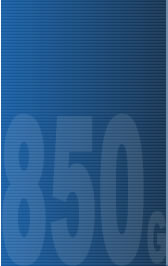













|
The filtration concept basically follows the Berlin methodology, namely, live rock with strong skimming. I have further augmented this with a diligent regimen of nutrient export through various means... the use of reactor media, macro algae harvesting, diligent sand vacuuming, and pre-filters.
There are essentially two “legs” of the plumbing system...the heater leg and the refugium leg. The heater leg has water entering the left overflow and first, encountering a bonded filter pad surrounding a 2” stand pipe. The water then passes through this pre-filter and drops down below the tank and flows through two in-line Aquadyne 1000 watt heaters before terminating into the sump baffle. Along the way, some of the water is diverted to run through the controller’s probes and through the refugium..
The refugium leg is very similar. Water flows from the right overflow, passes through a bonded filter pad surrounding a 2” standpipe, and continues down to the sump baffle. Water is diverted through the refugium via a ball valve that can divert all or part of the water flowing through this leg..
The sump has a 150gal capacity. Three 4300 Seq20 pumps draw water from the sump to provide flow for the calcium reactor, phosphate reactor, skimmer, and the two 13/4hp chillers before again terminating in the sump baffle .The returns from the sump to the display tank are provided by two additional 4300 Seq20 pumps…… one going to each of the rear corners of the display tank. There is one additional baffle in the sump that surrounds one of the two return pump intakes.
This enables anyone to pour food directly into the baffle and have the return pump distribute the food into the display tank without the food being spread throughout the entire sump. The baffle keeps the food around the pump’s intake until it all gets sucked up to the display tank.
Water top-off is fed through a Deltec Kalk reactor that is linked to a SpectraPure Litermeter 3 dosing pump. The dosing pump draws its water from a 15gal reservoir that is constantly refilled from the RO-DI unit. Currently, evaporation ( including skimmate losses) is approximately 10 gals/day.
Top |
|
 |
 |

